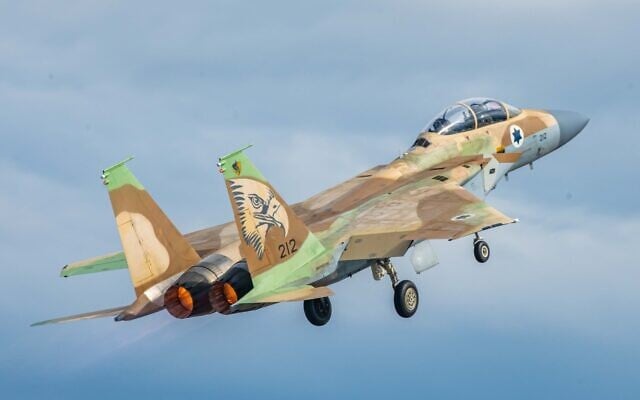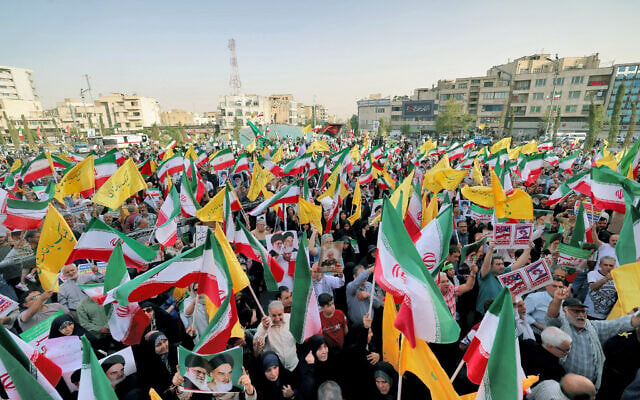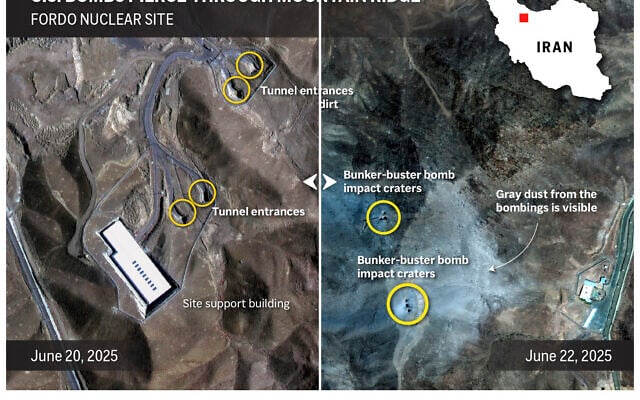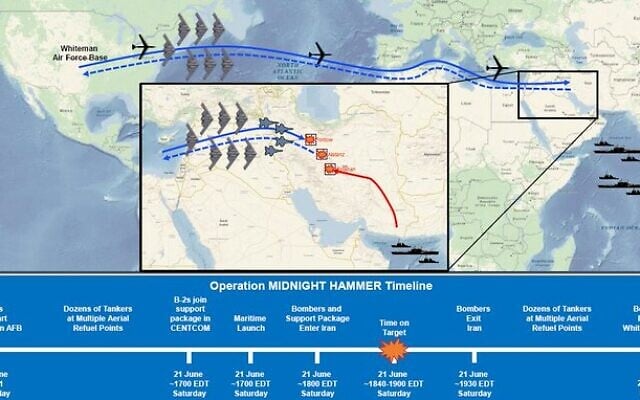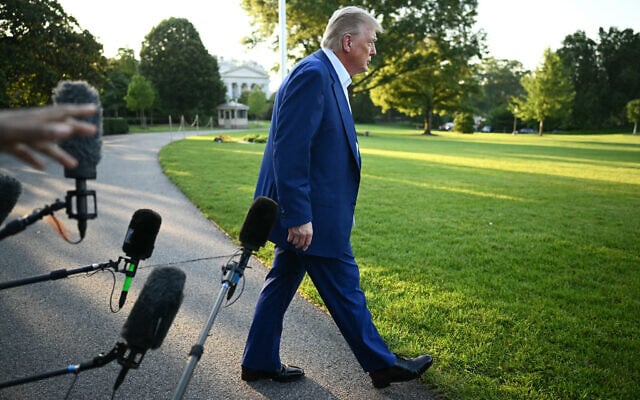



This Editor’s Note was sent out earlier Wednesday in ToI’s weekly update email to members of the Times of Israel Community. To receive these Editor’s Notes as they’re released, join the ToI Community here.
Talking to reporters on the White House lawn first thing Tuesday morning, Donald Trump let loose what may well have been the most bitter public denunciation of Israel by an American president since, well, ever.
Over and over, and over, and over, he savaged Israel’s leadership for ostensibly breaching the ceasefire he had brokered with Iran (which Israel hadn’t, but was about to), for having “dropped a load of bombs the likes of which I’ve never seen before” on Iran before the ceasefire came into effect, and generally for acting like ingrates after he had dispatched B-2 bombers to “obliterate” Iran’s three key nuclear facilities, notably including the near-impregnable Fordo.
Trump did critique Iran, too, just a little, and he made both countries the subject of his concluding F-bomb: “You know what? We basically have two countries that have been fighting so long and so hard that they don’t know what the fuck they’re doing. Do you understand that?”
But the overwhelming weight of his barrage was directed at Israel, generally regarded as America’s closest ally in the region, which had lost four more civilians hours earlier in a pre-ceasefire missile attack — a missile attack by the US-loathing, would-be Israel-destroying Islamic extremist regime in Tehran, which had continued to fire missiles immediately after the truce was meant to have begun at 7 am, and again more than three hours later. It was to the latest Iranian barrage that Israel was about to respond, so infuriating the US president.
“I am not happy with Israel,” he said, and repeated that “not happy” sentiment half a dozen times with minor variations, before heading off to a NATO summit in the Netherlands and phoning Prime Minister Benjamin Netanyahu en route to demand that he turn Israel’s bombers around. “Do not drop those bombs,” Trump ordered, and a chastened Netanyahu indeed brought back the IAF’s jets, abandoning reported plans to attack 15 key regime targets, and going through with just one minor strike on a radar installation that caused no casualties.
Although his former chief strategist Steve Bannon assessed that Trump had been “as mad as I’ve ever seen the president of the United States,” and ascribed this to cumulative fury at “the many lies we’ve gotten from the Netanyahu government,” Trump seemed largely mollified just a few hours later, telling reporters there’d be no consequences for Israel because it ultimately “didn’t do anything” to violate the ceasefire. By Wednesday, he was praising the Israelis for scaling back the retaliation — “I was so proud of them” — and acknowledging that “technically they were right” to claim that Iran had breached the ceasefire with its morning missile fire. “It was a little bit of a violation.”
But the lashing on the lawn underlined, for all the world to see, the acute risk of getting on the wrong side of President Donald J. Trump, even when you consider yourself to be among his closest allies, even when you have been thanked and congratulated by him just a short time before, and even when you’re not entirely sure what it is you are supposed to have done or be doing wrong.
That risk is now overtly ever-present for Israel, which always took pride in defending itself by itself from its would-be destroyers, but in this case had energetically lobbied the Trump administration to come to its aid. Only the US had the Massive Ordnance Penetrator bunker-busters capable of penetrating Fordo, and the B-2s to carry them. And Fordo, where advanced centrifuges could quickly convert highly enriched uranium to weapons grade, had to be penetrated if the advancing Iranian nuclear weapons threat was to be averted.
Days after those three American strikes, it is not definitively clear that the Iranian nuclear program is out. Trump is adamant that the regime’s main nuclear facilities are completely destroyed, and has warned that more attacks will follow if “the bully of the Middle East” doesn’t get the message and “now make peace.” Other assessments are more cautious. The Israeli army says the Iranians have been set back years. A preliminary US intel report is said to assess that would-be Iranian bombmaking has been delayed by only by months. Nobody knows for sure what has become of Iran’s 400kg stockpile of enriched uranium.
The president’s special envoy Steve Witkoff says the US is already in preliminary talks with the regime on resuming negotiations on a new nuclear deal under which, he says, Iran must not be allowed to resume uranium enrichment. That was a demand the ayatollahs derisively rejected throughout the 60-day period Trump had previously allocated for negotiations, setting the scene for Israel’s resort to force on June 13 and the US bombing runs of June 22.
While declaring that Israel (and the US) had “sent Iran’s nuclear program down the drain,” Netanyahu on Tuesday evening warned that “if someone in Iran tries to restore that program, we will act with the same determination, the same power, to cut off any such attempt.”
But any such subsequent return to warfare will henceforth require Trump’s approval, as that White House rebuke made plain, or place Israel in potential danger not only of public castigation but also of absent practical support.
Trump did not want this operation to escalate into protracted warfare. He came into office vowing to stop wars, not start them. He chose to exercise US military power to devastating but highly focused effect. He has told Iran he’ll strike again if it attempts to resume enrichment, but also said he doesn’t think that’s going to be necessary. For now, he’s done.
This, of course, is Trump, however — a president who on Sunday can muse about regime change “if the current Iranian Regime is unable to MAKE IRAN GREAT AGAIN,” and on Tuesday dismiss the notion as a recipe for chaos.
And in Witkoff he has a supreme negotiator who nonetheless has found it hard to internalize that Islamic extremists are ideologically intractable.
Urging Trump to bring American military might to bear on Iran, Netanyahu argued that thwarting the nuclear program of an ideologically and territorially rapacious death-cult regime was not only an existential Israeli concern but an American and global one. Trump was persuaded.
Greenlighting the US attack on Sunday morning, the US president helped Israel radically degrade an imminent threat of destruction, and might just have helped Israel save humanity.
But he and only he will decide if and when he needs to do it again.

